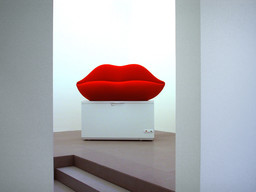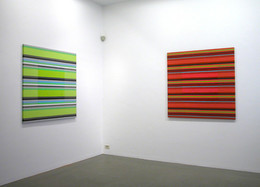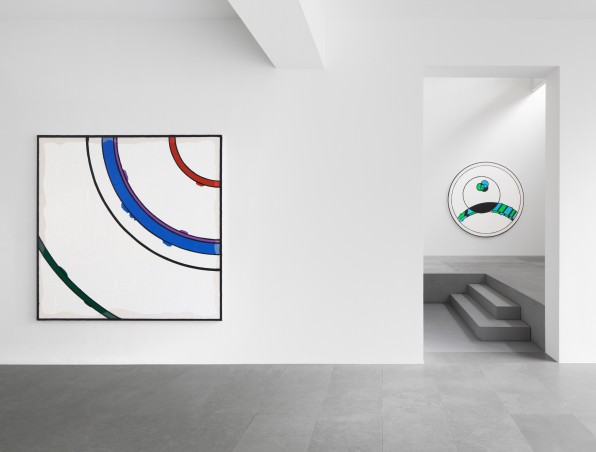Bertrand Lavier
20 January—19 February 2005
6 rue St-Georges | St-Jorisstraat
| 1 | / | 2 |
×
Bertrand Lavier is one of the most influential European artists of his generation. His obsession with the distinction between art and reality has led him to make artworks out of everyday objects, all with a rare intelligence and wit. Bertrand Lavier had his work exhibited at numerous international venues, including New York’s Museum of Modern Art, the Tate Gallery in London, the Centre Pompidou in Paris, and the Venice Biennale. It is the first time he is exhibiting at Xavier Hufkens.
“The work of Lavier is a critical rethinking of the so-called ready-made tradition, the everyday object presented as a work of art. Lavier's work of the early 80s, in which everyday objects were coated with thick brushstrokes of acrylic paint was a major turning point in his development and brought Lavier international fame. Great interest was also stirred by his works of overlapped objects which stemmed from his deliberately provoking contrast between the scholarly language of sculpture and the world of anonymous shapes and objects. The sculpture in the exhibition, made from a refrigerator and a design chair, is a beautiful example of this “bissocation”:
When you handle objects you always teeter on the brink of disaster. There is no advance plan, no rule but you feel that you get to the right thing just before disaster and that the proper balance is just before imbalance. This is a notion that is very important for me. […] If I take a classical work, the freezer on top of the safe, it is no longer an ordinary freezer plus an ordinary safe. What I really have is a low sculpture on a plinth. For me, this is a curious 'bissociation'. I can explain it another way: something is represented but at the same time that something turns into another something completely new. (Bertrand Lavier)”
(excerpt from press release Centro per l'Arte Contemporanea Luigi Pecci, November 2004).
In the 5 Tableaux d’Ameublement (Furnishing Pictures), which form the core of the exhibition, Bertrand Lavier uses strips of furnishing fabric. Their title obviously refers to Erik Satie’s Musique d’Ameublement but even without this knowledge, we see directly that the material used here, with its beautifully coloured design, refers to the decorative arts. The Tableaux d’Ameublement invite the viewer to rethink the issues linked to the current practice of painting. On separate sections of the woven fabric, Lavier repaints the linear motifs with the usual dense and physical brush strokes that also characterize his “painted objects”. By means of this visible, pasty superimposition, Bertrand Lavier puts into question the decorative function of the original object and shifts the attention to the specificity and uniqueness of the artistic gesture. Once more, a “turbulence zone” has been created, where an unexpected encounter between life and art is taking place.




